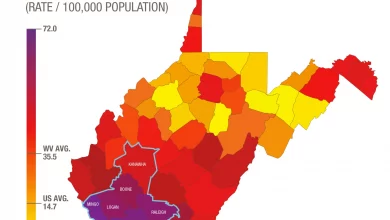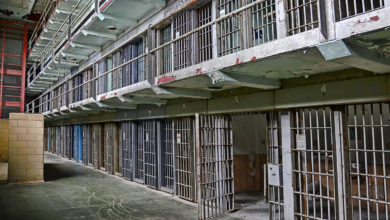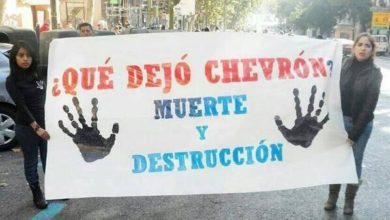Fourteen state Attorneys General announced yesterday that they had reached a proposed settlement related to civil suits against four major pharmaceutical companies that helped fuel the deadly opioid epidemic. Johnson & Johnson, McKesson, Cardinal Health and Amerisource Bergen Drug have signaled their willingness to accept a $26 billion settlement to clear a litany of suits filed by state and local governments. The money would take up to 18 years to be fully disbursed.
The executives at these companies whose actions contributed to the deaths of hundreds of thousands of people are not facing criminal charges. These corporate drug lords enjoy de-facto immunity for their crimes because of their ruling class status. If someone outside of the capitalist elite established an opioid trafficking network a miniscule fraction of the size of the pharmaceutical corporations’, they would spend the rest of their life in prison.
This is the second largest settlement in U.S. history, and reflects growing public consciousness about the destructive role played by big pharma. But nonetheless it is far from a devastating blow to these companies. For instance, Johnson & Johnson is on the hook for up to $5 billion to be paid out over the course of nine years. But on the very same day as the proposed settlement was announced, Johnson & Johnson reported skyrocketing profits — their net income for the second quarter of this year alone stood at $6.3 billion.
Merchants of death
The opioid drug supply chain is made up of three main corporate links: drug manufacturers, distributors and pharmacies. The manufacturers create and market opioid products, the distributors fill wholesale orders to pharmacies, and pharmacies distribute directly to patients.
Since the 1990s, these opioid companies have raked in untold billions of dollars by working together to flood communities big and small with highly addictive narcotics, inducing the misuse of prescription and illicit drugs on a mass scale. The consequences have been deadly.
Between 1999 and 2019, the corporate-engineered opioid epidemic claimed the lives of nearly 500,000 people in the United States. The number of drug overdose deaths since 1999 has quadrupled. 136 people die every day from opioid overdoses.
While the social devastation is beyond measure, and with local organizations trying to spread awareness, it was the mounting economic damages and losses – in the form of lost employment, profits, productivity, and especially the towering costs of addressing the public health crisis – that finally grabbed the attention of the capitalist government at various levels. Like the lawsuits filed against the tobacco industry two decades earlier, government plaintiffs are seeking to recover from opioid companies up-and-down the supply chain some of the costs resulting from the opioid epidemic. To this end, more than 3,000 civil lawsuits have been filed to get monetary compensation.
In the courtroom
Yesterday’s proposed settlement was part of a “Multi-District Litigation” (MDL) that aims to resolve a large number of these. But there are still many other legal actions in motion that are set to go forward despite the announcement.
The second-ever trial in this tsunami of opioid litigation is now underway in California, where the People of the State of California are seeking $50 billion in damages against four drug manufacturers – Johnson & Johnson, Endo, Teva and AbbVie. This dwarfs the first-ever trial, where Oklahoma took on and defeated Johnson & Johnson in 2019, proving that Johnson & Johnson’s false and misleading marketing campaigns altered prescription practices by knowingly and aggressively pushing improper opioid use.
Another state-level trial opened up in June in New York, originally intending to go after the entire drug supply chain of opioid manufacturers, distributors and pharmacies. Rather than suffer another loss, Johnson & Johnson settled out of court, agreeing to pay $230 million to New York, a small fraction of their opioid profits, even as they appeal the Oklahoma decision. Wanting to continue to fly under the radar, all of the implicated pharmacy chains also settled in the days leading up to trial, the details of which are unknown.
Meanwhile, in a West Virginia federal court, a trial between Cabell County and its seat Huntington against the nation’s “Big Three” opioid distributers – AmerisourceBergen, Cardinal Health and McKesson – is taking place. Cabell County has the highest rates of fatal opioid overdoses in West Virginia, which has the highest rate of fatal opioid overdoses in the United States. Opioid distributors are required by law to monitor the proliferation of the drugs they distribute to prevent misuse. However, distributors shipped so many drugs into West Virginia that on average 69 opioid prescriptions were written for every 100 people, including infants and children. In spite of this well-known data, distributors, mesmerized by their profits, continued to let the drugs flow, fueling the epidemic.
This case was originally part of the federal MDL. The “Big Three” were hoping for an MDL settlement because it would have resolved all the MDL cases against them and shielded the companies from future lawsuits by cities and counties. But Cabell County and Huntington did not like the proposed settlement, and thus, the case was sent to trial by the MDL judge. Now, it is considered the first MDL “bellwether trial,” meaning a trial that will give everyone involved in the thousands of other cases consolidated into the MDL a sense of what the future holds.






